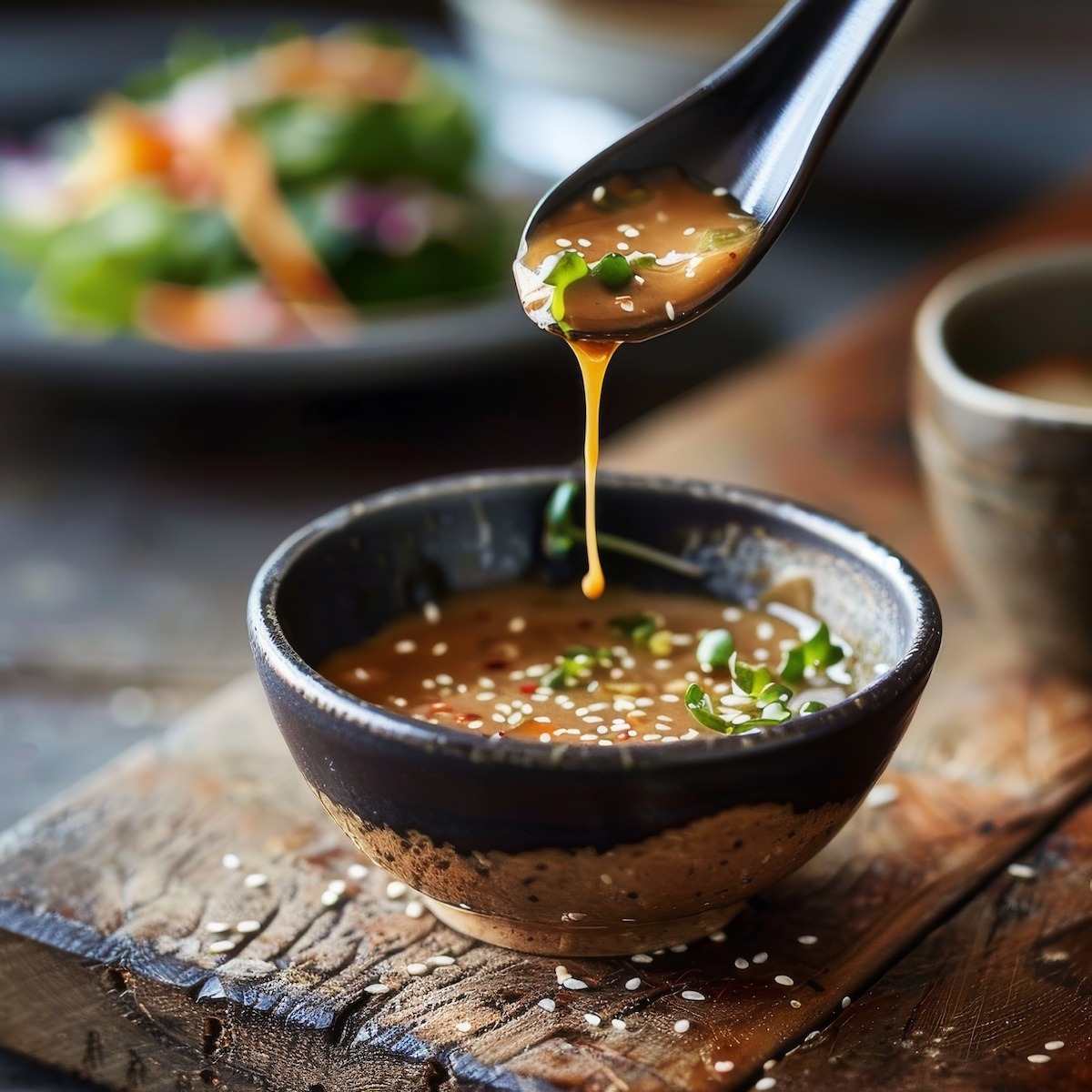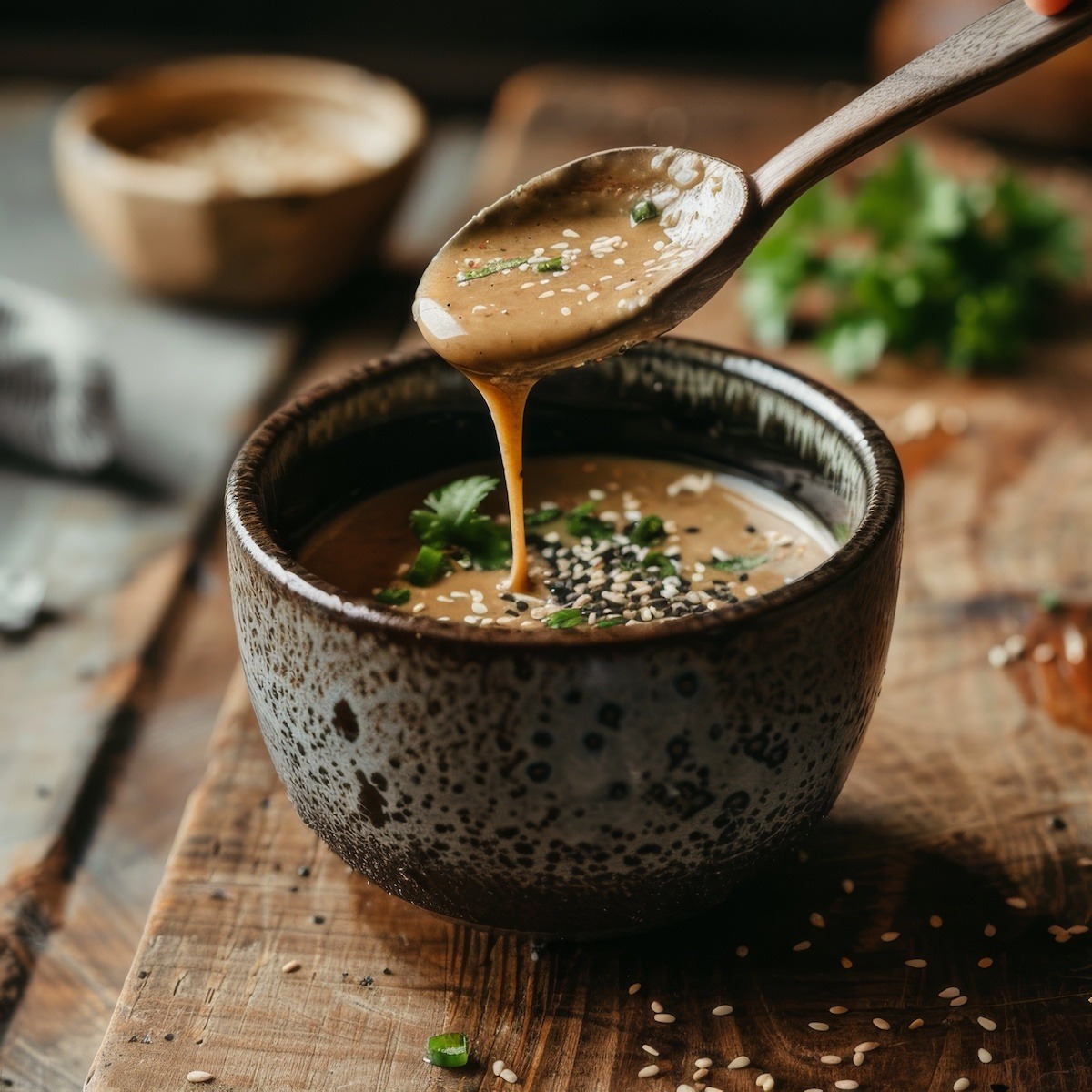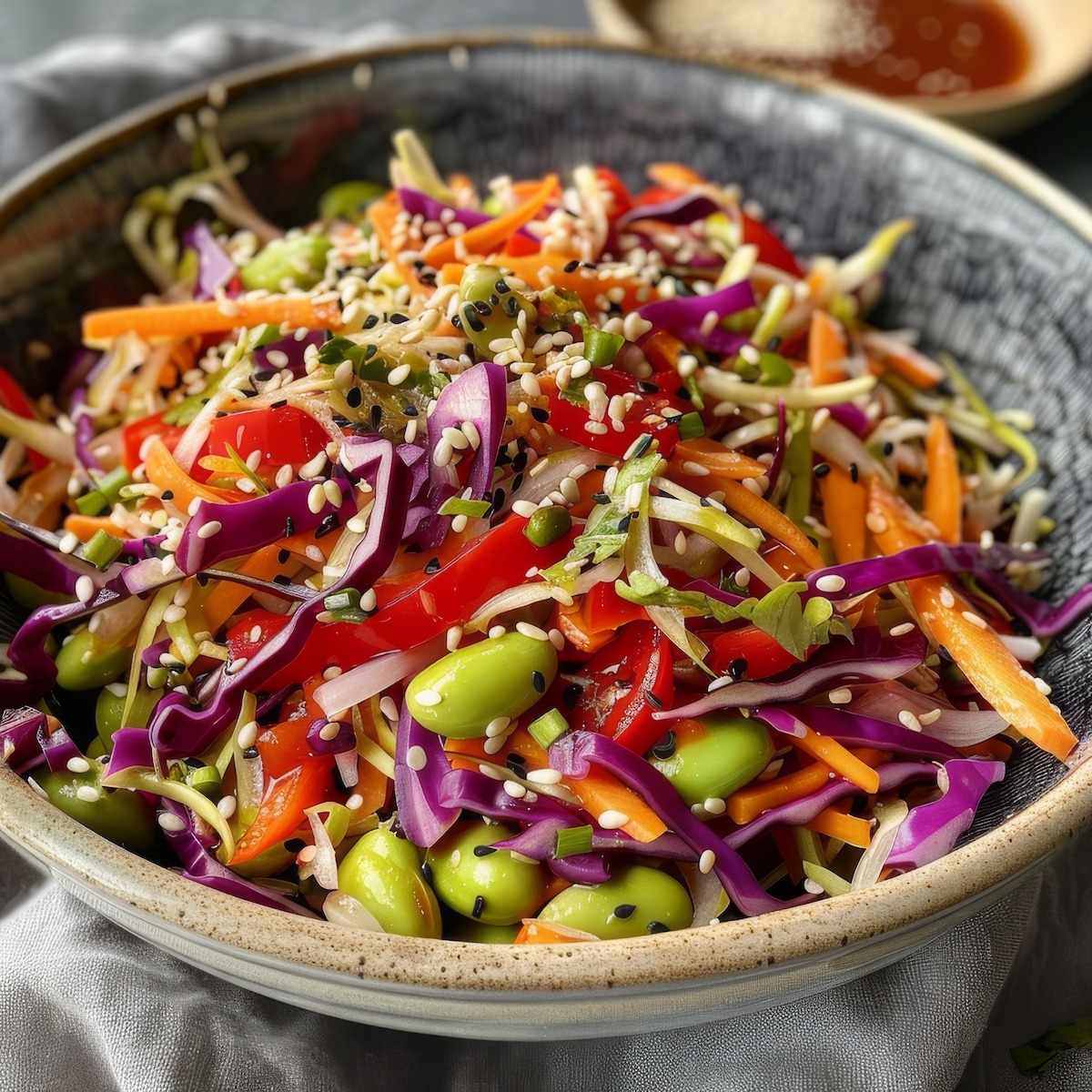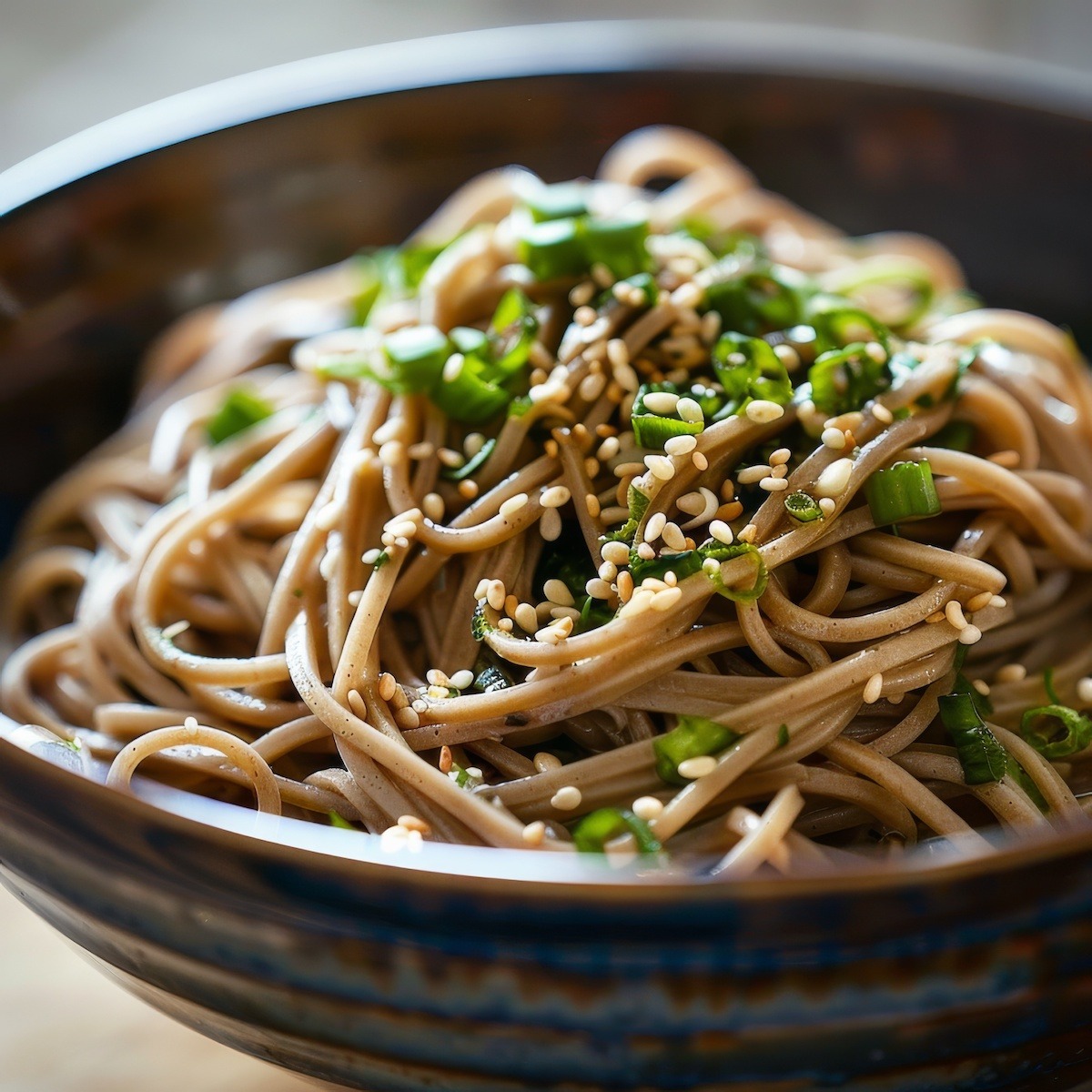

Miso Dressing
What Is Miso Dressing and How to Make at Home
Miso dressing, a staple in Japanese cuisine, offers a harmonious blend of savory, salty, and slightly sweet flavors, making it a versatile and beloved condiment. Derived from fermented soybeans, miso paste is the base ingredient, imbuing the dressing with its distinctive umami richness. Complemented by other components like rice vinegar, sesame oil, and sometimes a hint of sweetness from honey or mirin, miso dressing elevates salads, marinades, and various dishes with its complex taste profile.
At the heart of miso dressing lies the miso paste, a product of fermenting soybeans with salt and koji, a mold culture. The fermentation process can vary in length, yielding different varieties of miso paste, each with its own flavor and color, ranging from light yellow to deep brown. Common types include white (shiro), yellow (shinshu), and red (aka) miso, each lending distinct characteristics to the dressing.
Adding rice vinegar provides a tangy acidity that balances the richness of the miso, creating a well-rounded flavor profile. Sesame oil adds nuttiness and depth, enhancing the overall complexity of the dressing. Optional ingredients such as grated ginger or garlic can further enhance its aromatic qualities, adding layers of flavor.
Miso Dressing Versatility
Miso dressing is incredibly versatile and a gateway to culinary creativity, adding depth and dimension to a wide array of dishes. It serves as a delicious topping for fresh green salads, imparting a savory kick that complements crisp vegetables. When used as a marinade, it infuses meats or tofu with its bold flavor, creating succulent and flavorful dishes. Additionally, miso dressing can be drizzled over cooked vegetables, grains, or noodles, transforming simple ingredients into a satisfying and flavorful meal. The possibilities are endless, and the choice is yours to explore.
Beyond its culinary appeal, miso dressing also boasts significant health benefits. Miso paste is rich in probiotics, which promote gut health and digestion. It is also a good source of protein, vitamins, and minerals, making it a nutritious addition to any diet. By incorporating miso dressing into your meals, you’re not just adding flavor but also taking a step towards a healthier lifestyle.
In essence, miso dressing is not just a culinary gem but a cultural treasure that adds depth, flavor, and nutrition to a wide range of dishes. It embodies the artistry and tradition of Japanese cuisine. Whether used as a dressing, marinade, or dipping sauce, its versatility and complexity make it a beloved staple in kitchens worldwide, connecting us to the rich culinary heritage of Japan.

Miso Dressing
History of Miso Dressing
The history of miso dressing traces back to the origins of miso itself, which dates back over 1,000 years in Japanese culinary tradition. Miso, a fermented paste made primarily from soybeans, salt, and koji (a type of mold culture), has been a staple in Japanese cuisine since ancient times. Initially used as a seasoning and condiment, miso gradually evolved into various forms and applications, including the creation of miso-based dressings.
The exact origin of miso dressing is not precisely documented, but its emergence likely coincides with the widespread use of miso paste in Japanese cooking. As miso gained popularity as a flavor enhancer and nutritional powerhouse, chefs and home cooks began experimenting with incorporating it into dressings and sauces to elevate their dishes.
Historically, miso has been revered in Japanese culture not only for its flavor but also for its health benefits. It is rich in probiotics, vitamins, and minerals and is considered a nourishing and wholesome food. As Japanese cuisine spread globally, so did the popularity of miso and its derivatives, including miso dressing.
In modern times, miso dressing has become a staple condiment in traditional Japanese cuisine and fusion cooking. Its versatility and umami-rich flavor profile have made it a favorite among chefs and food enthusiasts worldwide. While traditional miso dressing recipes typically consist of miso paste, rice vinegar, sesame oil, and sometimes sweeteners like honey or mirin, contemporary variations may include additional ingredients such as ginger, garlic, or citrus juices to tailor the flavor profile to different tastes and dishes.
Today, miso dressing can be found not only in Japanese restaurants but also in grocery stores and kitchens around the globe. Its rich history, deep flavor, and nutritional benefits continue to make it a beloved and essential component of Japanese and international cuisine.
Ideas for Using Miso Dressing
Miso dressing is incredibly versatile and can enhance a wide variety of dishes with its rich, umami flavor. Here are some ideas for what to serve with miso dressing:
Salads

Asian Slaw with Miso Dressing
Mixed Greens Salad
- Toss with various leafy greens like arugula, spinach, and kale.
- Add toppings like cherry tomatoes, cucumbers, radishes, and shredded carrots.
Asian-Inspired Slaw
- Mix with shredded cabbage, carrots, and bell peppers.
- Add some edamame and sliced almonds for extra texture.
Grain Salads
- Combine with cooked quinoa, farro, or brown rice.
- Include vegetables like roasted sweet potatoes, bell peppers, and snap peas.
- Vegetables:
Roasted Vegetables
- Drizzle over roasted vegetables such as Brussels sprouts, broccoli, or cauliflower.
- Toss with roasted root vegetables like carrots, parsnips, and beets.
Grilled Vegetables
- Serve with grilled zucchini, eggplant, bell peppers, and asparagus.
Proteins
Grilled or Baked Tofu
- Marinate tofu in the miso dressing before grilling or baking.
- Serve with additional miso dressing drizzled on top.
Chicken or Fish
- Use as a marinade for chicken breasts or thighs, or fish like salmon or cod.
- Serve with extra dressing as a finishing touch.
Bowls
Buddha Bowls
- Combine with a base of brown rice or quinoa.
- Top with a variety of vegetables, beans, tofu, or grilled chicken.
Noodle Bowls
- Toss with soba noodles or rice noodles.
- Add vegetables like julienned carrots, cucumbers, and edamame.
Sides and Snacks
Dipping Sauce
- Use as a dip for fresh vegetables like celery, carrots, and bell pepper strips.
- Serve with rice paper rolls or sushi.
Cold Pasta Salad
- Mix with cold pasta, peas, and diced bell peppers for a refreshing side dish.
Other Ideas
Sandwiches and Wraps
- Spread on wraps or sandwiches for an extra layer of flavor.
- Pair with ingredients like avocado, cucumber, and sprouts.
Grain Bowls
- Use as a dressing for grain bowls featuring quinoa, barley, or farro.
- Add toppings like roasted vegetables, greens, and proteins.

Noodles with Miso Dressing
Types of Miso Paste
Miso paste is a traditional Japanese seasoning made from fermented soybeans, salt, and kōji (a type of mold used in fermentation). Grains like rice, barley, or buckwheat are sometimes added to the mixture. The fermentation process can last from a few weeks to several years, resulting in a thick, flavorful paste rich in umami.
White Miso (Shiro Miso):
- Fermentation Time: Short (a few weeks to a few months)
- Flavor: Mild and slightly sweet
- Color: Light beige to yellow
- Uses: Ideal for dressings, light soups, and marinades
Yellow Miso (Shinshu Miso):
- Fermentation Time: Medium (a few months to a year)
- Flavor: Milder than red miso but more robust than white miso
- Color: Light yellow to light brown
- Uses: Versatile for soups, stews, and marinades
Red Miso (Aka Miso):
- Fermentation Time: Long (up to several years)
- Flavor: Strong, salty, and deeply umami
- Color: Dark brown to reddish-brown
- Uses: Best for hearty dishes, such as stews, braises, and robust sauces
Barley Miso (Mugi Miso):
- Fermentation Time: Varies
- Flavor: Nutty and slightly sweet
- Color: Light to medium brown
- Uses: Good for soups, dressings, and spreads
Nutritional Benefits:
- Probiotics: Miso contains beneficial bacteria from fermentation, which can support gut health.
- Vitamins and Minerals: It contains essential nutrients, including vitamins B, E, K, and folic acid.
- Protein: Miso is a good source of plant-based protein.
Culinary Uses:
Miso paste is incredibly versatile in the kitchen. It can be used to make traditional miso soup, enhance the flavor of broths and sauces, marinate proteins, and create dressings and dips. Its rich umami taste can add depth to a wide variety of savory and sweet dishes.
In summary, miso paste is a cornerstone of Japanese cuisine known for its depth of flavor, health benefits, and versatility in cooking.
Tamari or Soy Sauce
Tamari is a type of soy sauce that originated in Japan. It shares many similarities with traditional soy sauce but has some key differences.
- Ingredients: Tamari is made primarily from soybeans, just like soy sauce, but it typically contains little to no wheat. On the other hand, traditional soy sauce is made from a mixture of soybeans and roasted wheat, along with salt and a fermentation starter called koji.
- Flavor: Tamari tends to have a richer, milder flavor than soy sauce. It is often described as having a smoother, less salty taste with a more pronounced umami flavor. This is partly due to the absence of wheat and a higher soybean content in tamari.
- Gluten content: Because tamari is usually made without wheat or with minimal wheat, it is often considered a gluten-free alternative to traditional soy sauce. This makes it suitable for people with gluten sensitivities or gluten-free diets.
- Usage: Tamari is commonly used in Japanese cuisine as a dipping sauce, marinade, seasoning, or condiment, similar to soy sauce. However, its milder flavor profile makes it particularly well-suited for dishes where a subtler soy sauce flavor is desired, such as sushi, sashimi, and light dipping sauces.
📖 Recipe
Miso Dressing Recipe
Ingredients
- ¼ cup miso paste white, yellow, or red miso, depending on your preference
- 2 tablespoons rice vinegar
- 1 tablespoon soy sauce or tamari
- 1 tablespoon honey or maple syrup (adjust to taste)
- 1 tablespoon sesame oil
- 1 teaspoon ginger freshly grated (optional)
- 1 clove garlic minced
- 2-3 tablespoons water to thin the dressing (adjust to desired consistency)
Instructions
In a small bowl, combine the miso paste, rice vinegar, soy sauce or tamari, honey or maple syrup, sesame oil, grated ginger, and minced garlic (if using). Mix well until the ingredients are thoroughly combined.
Gradually add water, 1 tablespoon at a time, stirring continuously until you reach your desired consistency. Some prefer a thicker dressing, while others prefer it thinner. Adjust the amount of water accordingly.
Taste the dressing and adjust the seasoning if necessary. Depending on your preference, you can add more vinegar for acidity, more honey for sweetness, or more soy sauce for saltiness.
Once you’re satisfied with the flavor and consistency, transfer the miso dressing to a jar or airtight container for storage.
Store the miso dressing in the refrigerator for up to one week. Before using, please stir or shake it well, as the ingredients may separate over time.
Notes
Feel free to customize this recipe to suit your taste preferences by adjusting the ratios of the ingredients or adding additional flavorings like citrus juice, sesame seeds, or green onions. Enjoy experimenting and creating your perfect miso dressing!
Some of My Favorite Sauce Recipes
 Print
Print




